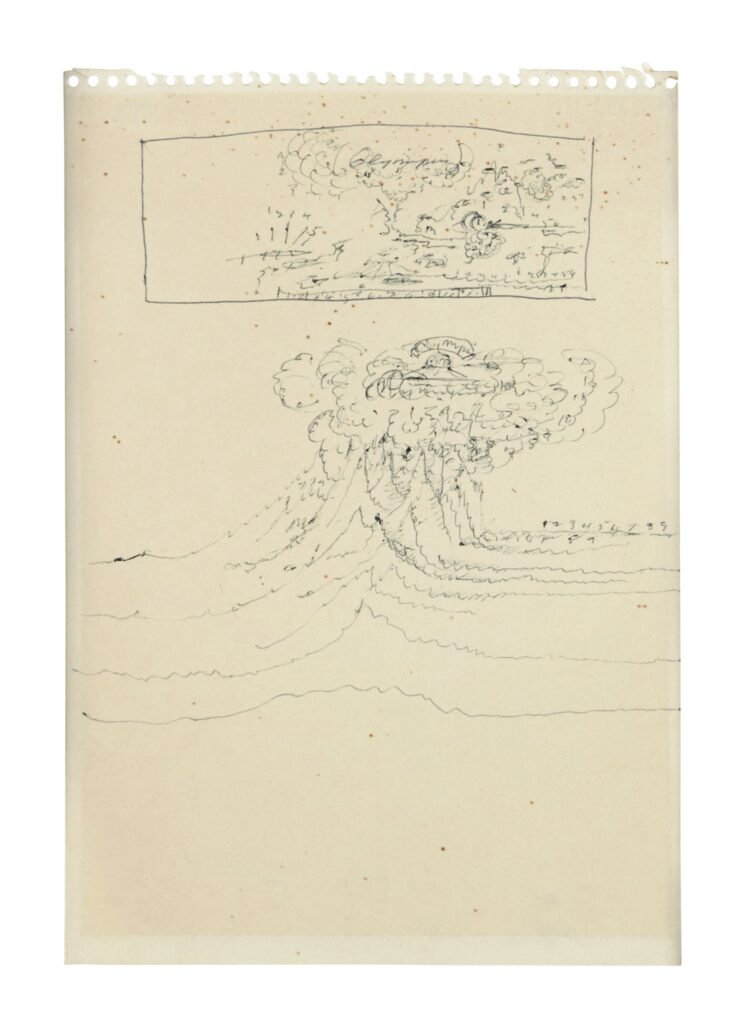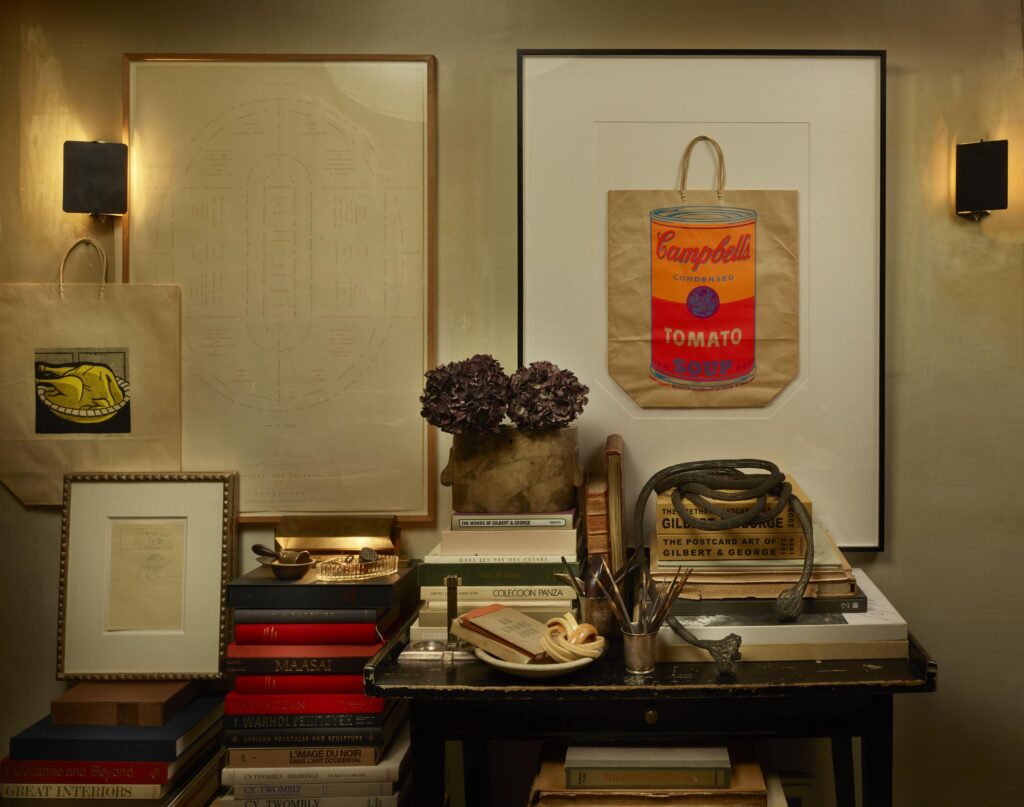
Maybe you’re different, but I confess, I never imagined Cy Twombly making sketches. Like his marks, or his line, which Barthes described as “without goal, without model, without telos,” his compositions always feel like they just happened, products of the moment of their execution.

He called some works studies, of course, but those always seemed like iterations, or versions, which were things he made a lot of. Hauser & Wirth brought one to Basel a few years back, and it very much feels like a version.
He also worked in series, groups, and it’s impossible not to imagine he mapped those out ahead of time, or at least planned them in some way.

But here are five what look like preparatory sketches on two sheets of little notebook paper. They are from 1961 and belonged to Robert William Burke, a dealer in Paris whose books from Twombly were inscribed to “Willie.” On the back of these sheets, though, Twombly dedicated them to “My K… 2” and “My K… 3,” and honestly, “Who is K?” is a less urgent question right now than, “So that means there’s also a 1?”
Actually, the real question is what these actually are. I don’t have Twombly’s complete oeuvre handy to see if these relate to some specific c. 1960-63 works, but I can’t find any that map to the narrative. And to the map. There is geography and place—landscape—in these sketches, with Mount Olympus towering over all. The last one looks like Mordor. It’s the one Burke apparently kept in the foyer.

There is also time, sequence: that top one literally goes left to right, start to end, with battles and places in between.
That Twombly planned, or worked out, or imagined, such traditional compositional structures for his paintings feels almost as anachronistic and radical as his antique, classical, and poetic references. Even if they get buried by his marks and signs, or even if they just remain in his head, or his eye.
